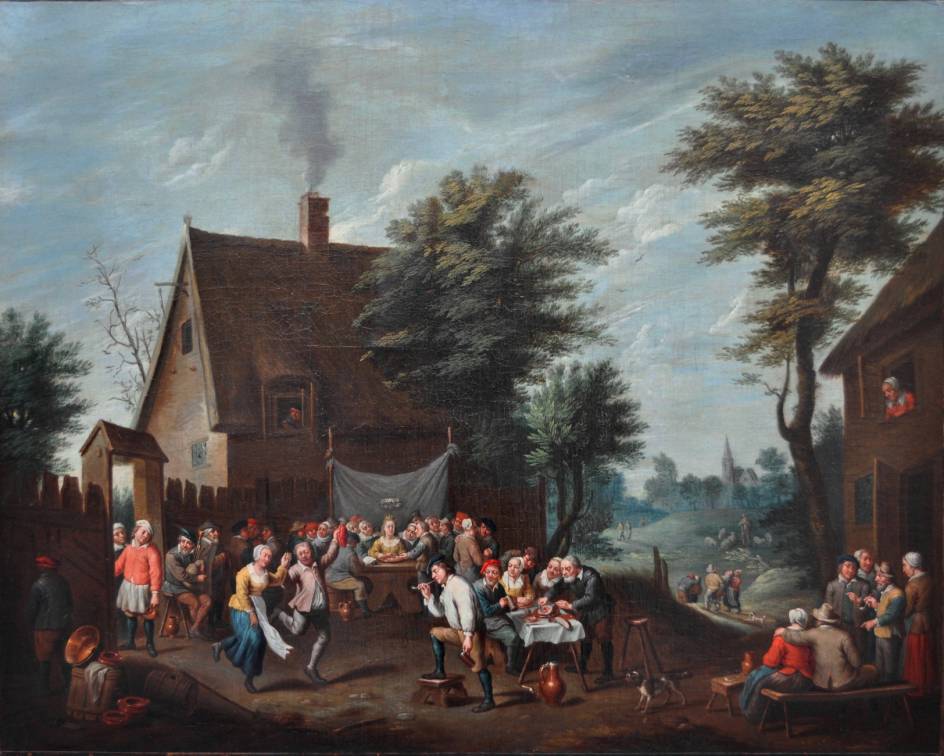A wedding feast
Oil on canvas : 65,7 X 82,1 cm
Unsigned
Unframed
"All paintings are fully documented with texts and photographs of comparative items. All this information is removed from our website once the painting is sold".

About Balthasar Beschey
Flemish painter
Antwerp 1708 – 1776 Antwerp
In the first half of his career Beschey painted a lot of landscapes, in the second half religious scenes and also portraits.
Pupil of the little known Pieter Strick.
Beschey was professor of Andreas Cornelis Lens.
Professor and director (from 1775 onwards) of the Academy of Arts in Antwerp.
Dean of the Painter’s Guild of Saint Luke in 1775/76.
Our painting must be an early work, dating from the first half of the 18th century.
About our painting
During the late 17th century and the major part of the 18th century there was in Flanders a revival of the elder style of painting.
Both Balthasar and his elder brother Carel (Antwerp 1706 – 1776? Antwerp?) Beschey are well known and typical exponents of this 18th century revival style. They are best known for their respectfully painted
attractive, peasant scenes in fresh colours set in bucolic Flemish landscapes in the manner of Jan Brueghel I.
The composition of our painting goes back to another icon of 17th century Flemish art, to David Teniers the Younger (Antwerp 1610 – 1690 Brussels). It was most probably painted by Balthasar Beschey (Antwerp 1708 – 1776 Antwerp), whose typical rendering of foliage can easily be recognized.
David Teniers II had a long, fruitful and successful career. During his life time he was already often copied, but after his death his popularity kept on growing, especially also in France, for the major part of the 18th century.
A lot of the artists that he inspired have, because of the poor quality of their works, remained anonymous. Others, such as Thomas van Apshoven or Andreas Martin, had enough personality to create something new, which is still recognizable.
This is also the case with our painting: although the source for the composition is for sure Teniers, the output is very typical of the 18th century (its colour scheme, the foliage and the facial types).
